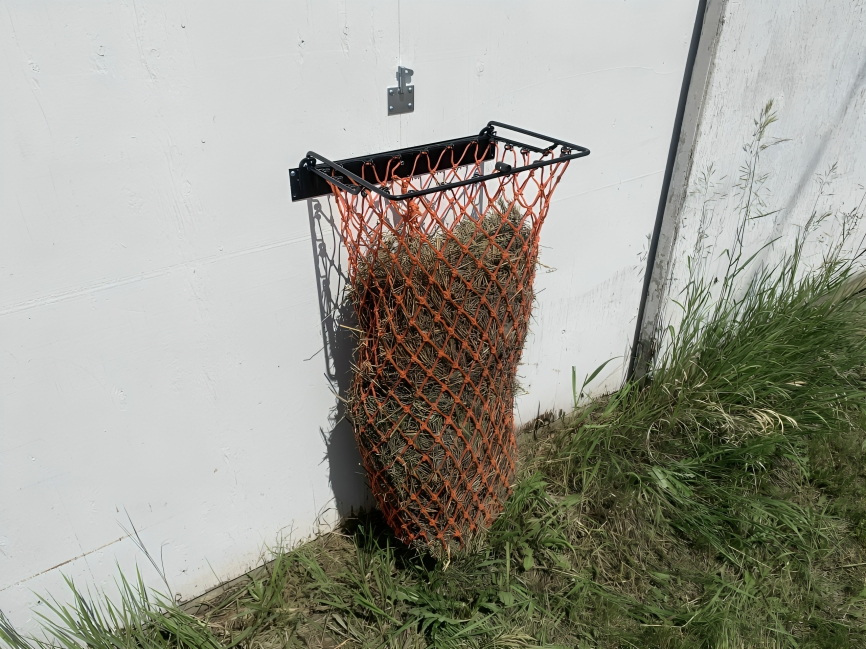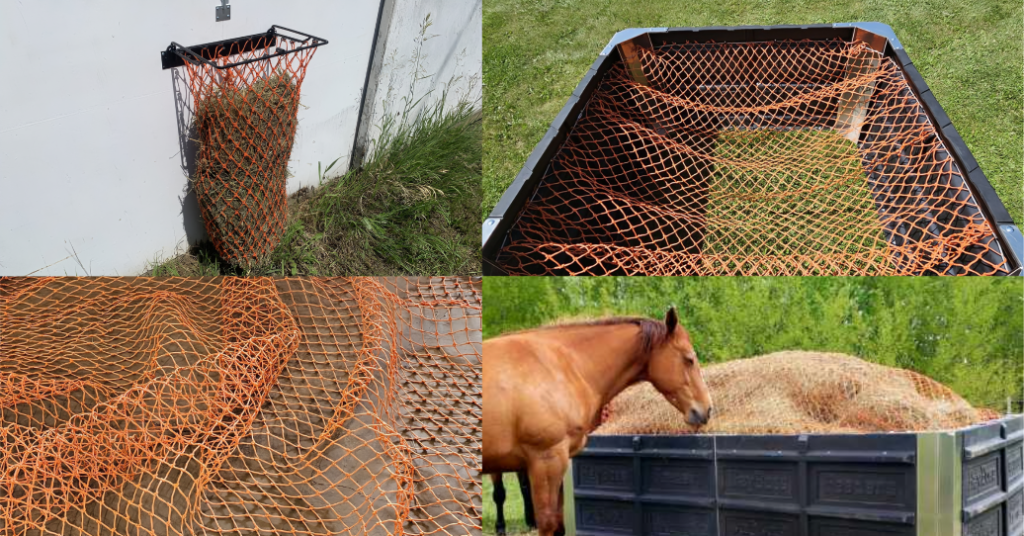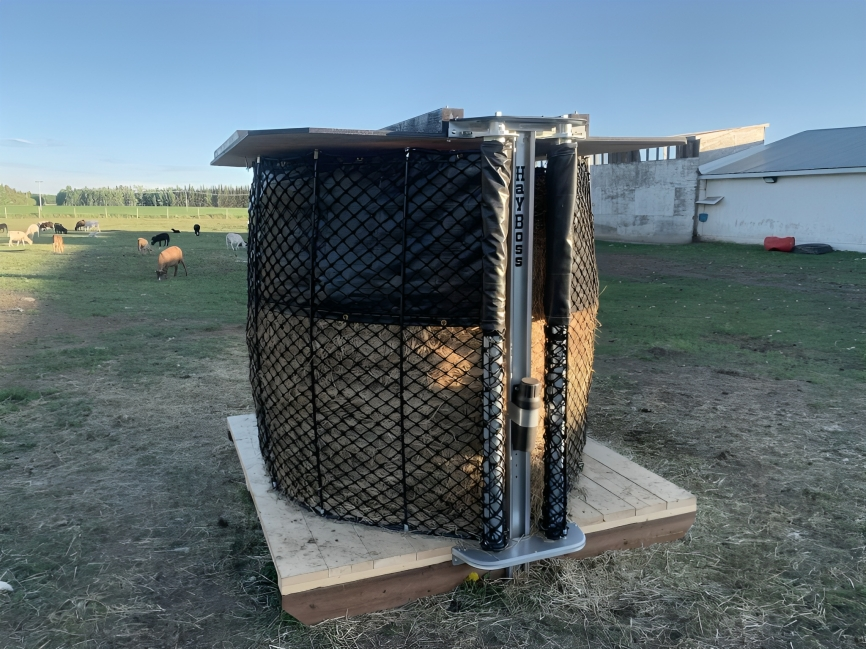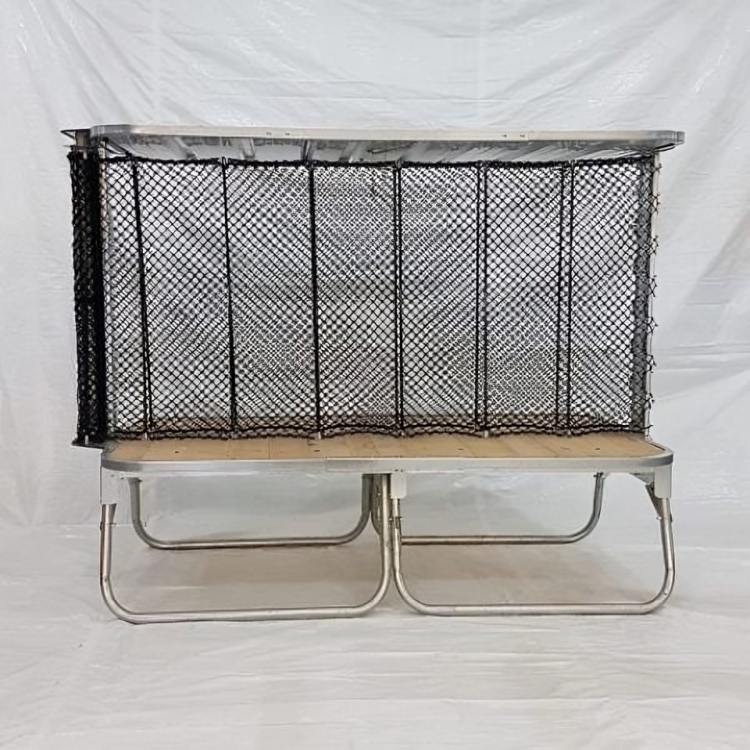Financing on Feeders also now available! Payments less than the amount of money you’ll save on Hay Costs!
Feeding livestock often feels like a balancing act. They get enough food to remain healthy, but half of it goes to waste.
Did you know that traditional hay-feeding methods can result in a loss of 30% of hay, costing time and money?
However, there’s a better way. Combine hay nets with well-designed feeders and reduce wastage considerably while ensuring that your animals are getting the required nutrition.

It may seem simple, but it’s a game-changer for farmers’ feeding routines which will enable them to take care of their animals and land more efficiently.
Netting is an easy way to control the amount of hay consumed by livestock. You can limit access by putting hay into a net. This helps prevent overeating which can lead to conditions like obesity, digestive issues, and dental problems among others.

Hay nets come in many different shapes and sizes depending on what type of feeder or feeding arrangement you have. Whether you have small square bales or large round ones, there’s a combination of both feeder and net for you.
Keep in mind, when you go for these types of nets, without a frame or anything, it is hard to keep the netting on the bales so netting only works as well as the feeder that it is set up on.
The best net for you depends on your livestock’s size, needs, and feeding behaviors. Consider factors like:
Pro Tip: Always measure the bales you’re going to use and ensure that the feeder you buy works well with the net. An improperly sized net or feeder can be discouraging for both you and your livestock.
Controlled consumption: One of the greatest benefits of using nets on animals is that it helps them avoid overeating. When given unlimited access to hay, grazing tends to consume more than necessary leading to obesity and other health issues. Therefore, by feeding them at a controlled rate, we can regulate their intake of hay.
Improved nutrition: Net feeding slows down eating so that animals better absorb nutrients from their food improving overall health and performance.
Reduced hay waste: A lot of hay is trampled upon or wasted when animals eat it freely. Minimized wastage through netting saves money and reduces one’s eco-footprint.
Improved dental health: Chewing too fast can lead to dental problems in livestock. Slowing down chewing by means of netting can help prevent dental abscesses among others.
Netting actually will slow down your animals and this will help with the natural way of eating and therefore help them graze instead of gorge on their feed.
Enhanced pasture management: You can conserve your pastures and avoid overgrazing by reducing how much fodder they get from hay sources.
Finding an ideal feeder might require some research but it can make farming much easier!
The size of your animals, the type of hay, and how your animals feed all play a role in selecting a suitable hay net. The choice should also be influenced by the feeder that will be used as this must match with the net to serve its purpose appropriately. Small-mesh nets are excellent for animals that eat quickly, while larger mesh nets may be better suited for more relaxed grazers.

To make sure that your hay net and feeder work well together they must be properly installed. To prevent slipping or being pulled down by eager animals, the net must be secured tightly to the feeder. Especially in the case of DIY feeders. You should also ensure you put the feeder at an appropriate level; low enough for ease of access but high enough so that it does not tangle.
Pro Tip: Use multiple anchor points when installing bigger systems to share weight across them and avoid wear.
When filling your hay net, distribute it evenly and make sure you have a stable feeder so as not to create pressure points which will result in premature wearing out of your net. Simply refill when the bag gets about two-thirds empty to maintain a continuous supply without causing frustration among your animals.
Regularly check your feeds and nets for signs of damage, especially at seams and attachment points. Once in a while clean dust off these nets, removing any other dirt such as leaves which can impair their functioning or durability.
Pro Tip: Rotate between multiple hay nets and feeders to extend their lifespan and reduce the wear on any single setup.

One common worry is safety when using hay nets. However, if properly installed and maintained they present little risk of entanglement provided the right feeders are used with them. Nevertheless, always choose an appropriately sized netting system with a matching feeder and observe the behavior of your animals, especially at the initial stages of introduction to net feeding.
The long-term saving from reduced wastage in hay and improved health status for your livestock usually outweighs the cost of investing in hay nets and feeders. Consider how much will you save on feed costs if both the net and feeder last.
When using hay nets, they are generally easy to use especially those that have been designed to securely hold them together as one. The only problem is with filling or installing it properly which takes little time for one to get used to. Most farmers find them an ideal tool in managing feed for their animals after a few trials.
It might take time before some animals get used to feeding on nets more so if they have never come across such a device. Start by using the net along with traditional methods of feeding; gradually switch to full-time net feeding until your animal becomes comfortable with that.
Net feeding is a simple yet effective way to improve the health and well-being of your livestock. By incorporating hay feeders and nets into your livestock management practices, you can reap the benefits of a healthier, more efficient, and more sustainable feeding system. It’s a win-win for both your animals and your farm.Ready to give net feeding a try? Explore our range of high-quality hay feeders designed to meet the needs of various livestock. Your animals—and your wallet—will thank you! And don’t forget to share your experiences with us—we’d love to hear how net feeding has made a difference on your farm.
Powered by Prevail Marketing copyright 2025